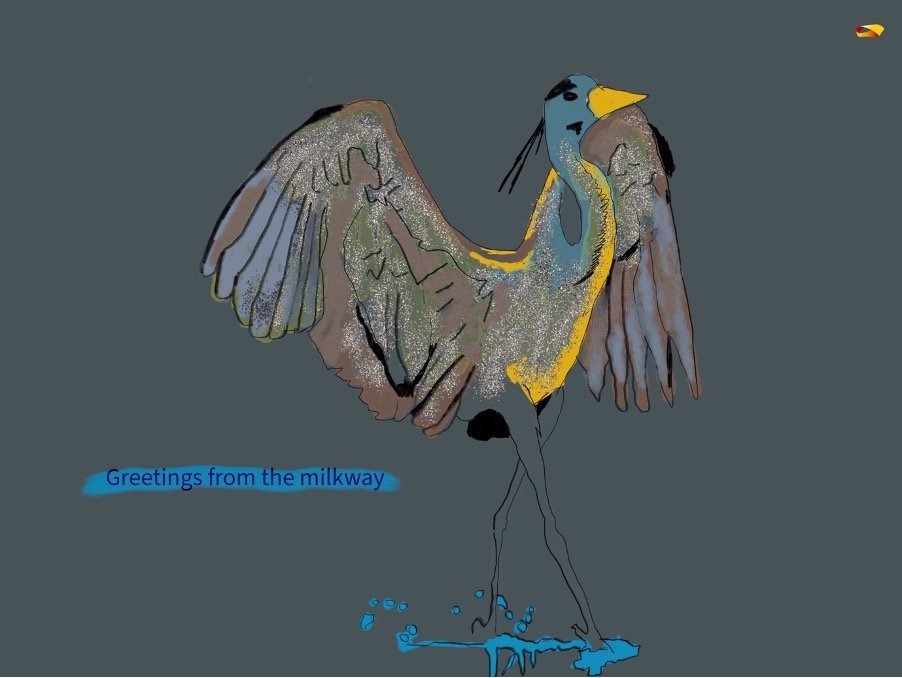First of all, introduce yourself to our readers. What is your artistic background, and how did you start experimenting with images?
My name is Désirée Jung, and I am a writer born in Brazil but living in her adopted country Canada for the last 24 years of her life. I studied creative writing, film, and comparative literature in university, but ever since I was a child, I have loved using carbon paper to retrace lines of the images around me. My grandmother, and most women from my paternal lineage, used painting as a creative expression but never as a profession. I came to painting later on in my career, mostly as a way to experiment with digital tools, since my background in film and creative writing somehow shied me away from it. It took me some time to “authorize” myself to use the pencil again.
Why are you an artist, and when did you first become one?
Again, the difficulty in naming things. Naming myself a writer, a painter, and a woman actually is a continuous labour of desire and courage. Art, for me, is the only possible mediation between how I feel and experience life. My senses are the medium, art being its vehicle. I think we are always evolving, so I am not sure if I have become an artist or if art has made me into who I am.
How would you define yourself as an artist?
Honest to my truth, whatever that may be. I think I am constantly struggling to write and express aspects of life that fear me the most because they also attract me with the same strange intensity.
In your statement, you quote writing as a central focus of your work that you express through video poems. How did you come up with this idea?
I said I am primarily a writer because I think we are inhabited by language, primarily. The word and the letter are inscriptions that ground us with sounds, so I call myself an artisan of words. The series of video poems came about from a desire to expand my thoughts to other sensorial possibilties but also to make poetry a more accessible, democratic medium, less intimidating.
What’s the essential element in your art?
Again, the truth comes to mind. Singularity, queerness, the uncanny, and the outcast are elements I praise when working. Art, for me, has to be free of labels, at least in my own creative process.
Do you find that the shift to digital exhibitions and art fairs has helped you promote your work?
I am still a bit lost as to how to circulate in this new world of the digital medium. Am I not even sure of being part of a community? But I do believe that technology has helped me (but also destroyed us) immensely, and I think the key is to find the elements or groups that speak to you in a way one’s art can be better represented.
What do you think about the art community? And what would you like to be implemented?
I think I am afraid of “the art community!” Honestly, I am not very good with large groups, and I prefer to deal with one by one. However, when I do that, and especially now that I am older and hopefully wiser, I find it easier to express myself to anyone and not be led by perhaps narcissistic frustrations or ego trips that really don’t have anything to do with the work I do alone in my creative space.
Finally, any projects you are looking forward to for this year?
I am not sure yet. However, I have started working on a few drawings and poems about creative destruction and its relationship with the chaotic environmental mess we find ourselves taking part in. Will see what happens.
Entrevista publicada em Al-Tiba 9 Contemporary Art.
Arte incluída na coletânea A Like Artist.

 English
English
